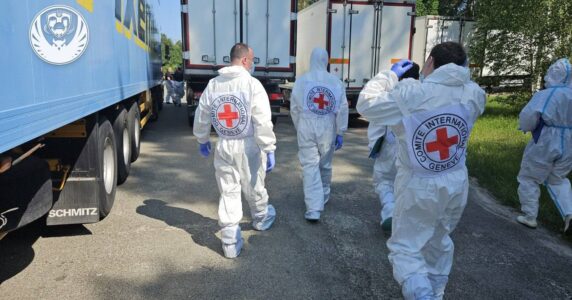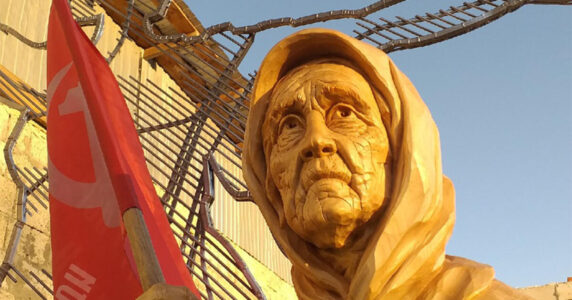Navigation and useful materials
On June 6–7, a fake about a decision by the Ukrainian government to suspend search and exhumation work in Puzhnyky, Ternopil region, was circulated in the Polish segment of social networks. The Center for Strategic Communication and Information Security explains how this disinformation “injection” originated and spread.
The original source was a fake Facebook page of Professor Andrzej Ossowski of the Pomeranian Medical University in Szczecin. The page was created in May 2024. Its first post appeared a year later. As of June 6, the page contained nine posts, all covering search operations in Puzhnyky, allegedly involving Professor Ossowski.
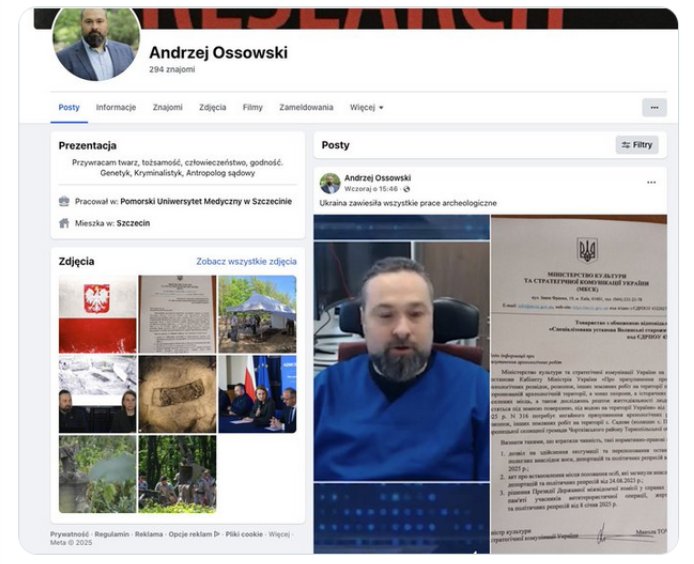
On June 6, the page published two artifacts: a fake document from the Ministry of Culture and Strategic Communications of Ukraine regarding the suspension of work in Puzhnyky, and an AI-generated video address (deepfake) by Andrzej Ossowski, reiterating this “injection”.
Dissemination of the fake
On Facebook, the fake had limited reach and only three reposts. A photo of the forged document and the generated video were spread in the Polish segment of X (Twitter). Monitoring tools indexed the dissemination of the fake by the following accounts:
| Account | Previous posts |
| @Doktul_Bapka | Anti-vaccine content; anti-migration rhetoric; Euroscepticism. |
| @EvLLeticia | Anti-Ukrainian rhetoric; antisemitic rhetoric; Euroscepticism; political agitation for Grzegorz Braun and the “Confederation”. |
| @coolfonpl | Anti-migration rhetoric; anti-Ukrainian rhetoric; Euroscepticism; entertainment/humorous content. |
| @sanoczanka | Reposts from other accounts with anti-migration, anti-Ukrainian rhetoric, and Russian propaganda and disinformation. |
As of June 9, the posts with fake documents and generated videos from these accounts were deleted. A rebuttal was posted on the @coolfonpl page instead.


On June 7, the fake was published in the Telegram channel Ostatnia Rubież RP – Q POLSKA (as of June 9, the post was deleted). On Facebook, the fake circulated in groups where a significant portion of the content includes anti-Ukrainian rhetoric, calls not to support Ukraine or Ukrainian refugees (STOP POMOCY UKRAINCOM, Polski Ruch Antywojenny, Zjednoczona Polska), and in comments under posts on pages of Polish parties and politicians.
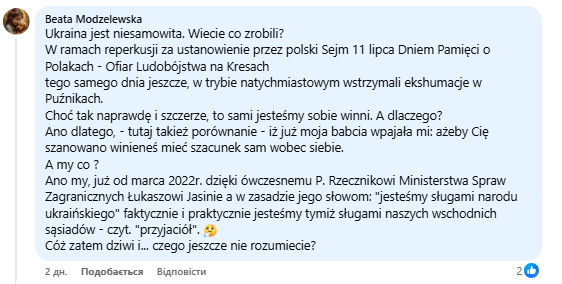
Rebuttal of the fake
The fake was promptly debunked in both Ukraine and Poland.
Relevant statements were made by the Minister of Culture and Strategic Communications of Ukraine Mykola Tochytskyi, the Polish Ministry of Culture and National Heritage, MEP Michał Dworczyk, and former Prime Minister of Poland Mateusz Morawiecki.
‼️ STOP FAKE NEWSOM ‼️
W sieci krążą fałszywe informacje na temat rzekomego wycofania zgody na ekshumacje na Ukrainie. To KŁAMSTWO!
🔵 Prawda jest jedna – ekshumacje trwają i będą trwać.@PoselWrobel pic.twitter.com/coxjqZKL0x
— Kancelaria Premiera (@PremierRP) June 9, 2025
Their statements were disseminated by Polish and Ukrainian media: as of June 10, monitoring tools indexed more than 200 publications refuting the fake with references to Ukrainian and Polish officials.

The fake content was flagged as such on Facebook and X.

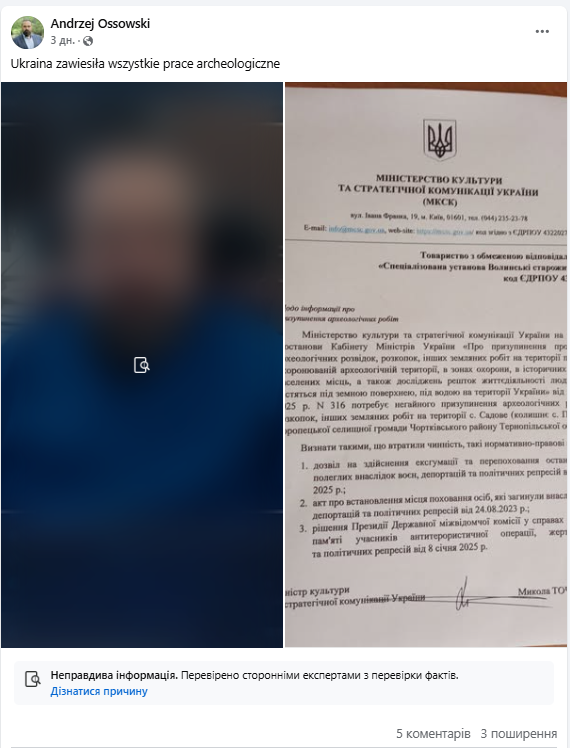
Events preceding the spread of the fake
In late May, representatives of Ukrainian and Polish government agencies published the results of the field stage of the search and exhumation work in Puzhnyky.
On June 4, the Polish Sejm voted to designate July 11 as the “National Day of Remembrance of Poles – victims of genocide committed by the OUN and UPA in the eastern territories of the Second Polish Republic.” The Ministry of Foreign Affairs of Ukraine stated that this decision “runs counter to the spirit of good neighborly relations between Ukraine and Poland.”
“We once again remind you that Poles should not look for enemies among Ukrainians, and Ukrainians should not look for enemies among Poles. Our common enemy is Russia. For the sake of the common strength, freedom, and security of our two friendly countries, we must jointly resolve problematic issues rather than aggravate them,” the MFA emphasized.
The fake videos and “document” were accompanied by claims that the fictional “suspension” of exhumation was allegedly Ukraine’s “response” to the announcement of the remembrance day in Poland. Thus, the appearance of the fake was synchronized with the decision of the Polish parliament and Ukraine’s reaction. The fake was created and disseminated to:
- Discredit the progress made by Ukraine and Poland in conducting search operations;
- Undermine trust in the results of the exhumation in Puzhnyky;
- Fuel anti-Ukrainian sentiments in Poland, anti-Polish sentiments in Ukraine, and worsen bilateral relations between the countries.
The implementation of these goals aligns with Russia’s strategic objective – to weaken Ukraine, Poland, and Europe as a whole.
If you have found a spelling error, please, notify us by selecting that text and pressing Ctrl+Enter.
